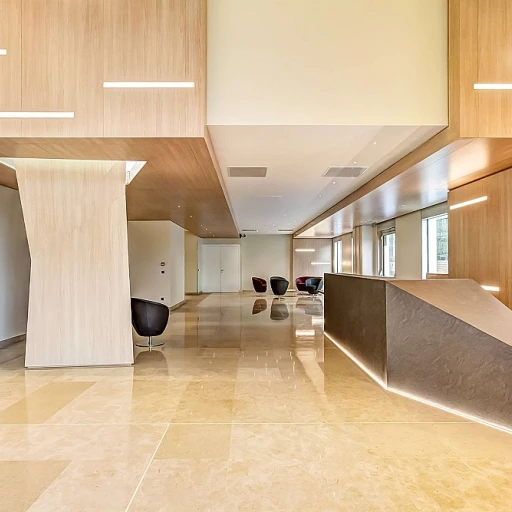
Understanding the core principles of responsive design
What Makes a Design Truly Responsive?
Responsive design is more than just making a website look good on different screens. At its core, it is about creating digital experiences that adapt seamlessly to the wide variety of devices people use today. This approach ensures that content, images, and navigation remain accessible and visually appealing, whether viewed on a smartphone, tablet, laptop, or desktop monitor.
Fluid Grids and Flexible Images
One of the foundational principles of responsive design is the use of fluid grids. Instead of fixed pixel values, designers use relative units like percentages, allowing layouts to resize smoothly across screen sizes. Flexible images work hand-in-hand with these grids, scaling appropriately so visuals never overflow or appear distorted.
Media Queries: The Engine Behind Adaptability
Media queries are a powerful tool in CSS that let designers apply different styles based on device characteristics such as screen width, orientation, and resolution. This means a single codebase can deliver tailored experiences for each user, enhancing both usability and aesthetics.
- Mobile-first approach: Designing for the smallest screens first ensures essential content and functionality are prioritized, then enhanced for larger displays.
- Breakpoints: Strategic points where the layout adapts to different screen sizes, ensuring optimal readability and interaction.
Understanding these principles is essential before exploring how device diversity influences design choices or how to balance aesthetics with usability. For a deeper dive into the fundamentals and why they matter for web and mobile adaptability, check out this in-depth look at responsive design as a key factor in web and mobile adaptability.
The impact of device diversity on design choices
Why Device Diversity Matters in Web Design
Today’s digital landscape is shaped by a vast array of devices, from smartphones and tablets to laptops and large desktop monitors. This diversity directly influences how users interact with websites and how designers must approach their work. Responsive design is not just a trend; it is a necessity for delivering a consistent and accessible experience across all screen sizes and resolutions.
Key Considerations for Multiple Devices
- Screen Size Variations: Devices come in countless shapes and sizes. A layout that looks perfect on a desktop might break or become unreadable on a mobile device. Designers need to prioritize flexible grids and scalable images to maintain usability.
- Touch vs. Click: Touchscreens require larger, well-spaced interactive elements, while mouse users expect precision. This difference impacts button size, navigation, and even the spacing between links.
- Performance Optimization: Mobile users often have slower connections. Optimizing images, reducing unnecessary scripts, and leveraging modern CSS techniques can significantly improve load times and user satisfaction.
- Orientation Changes: Tablets and phones can switch between portrait and landscape. Responsive layouts must adapt fluidly to these changes without breaking the user experience.
Adapting to User Expectations
Users expect seamless transitions between devices. For example, someone might start browsing a site on their phone and continue on a laptop. Consistency in navigation, readability, and overall experience is essential. Ignoring device diversity can lead to frustration, higher bounce rates, and lost opportunities.
For a deeper dive into how responsive design and UX work together to create a perfect adaptation across all screens, check out this resource on responsive design and UX adaptation.
Balancing aesthetics and functionality in responsive layouts
Finding Harmony Between Visual Appeal and Usability
Creating a responsive website is not just about making content fit different screens. It’s about ensuring that both the look and the functionality work together seamlessly, no matter the device. Users expect a visually pleasing experience, but they also need to navigate and interact with ease. Striking this balance is at the heart of effective responsive design.
- Visual Consistency: Maintaining a consistent brand identity across devices is crucial. Colors, fonts, and imagery should adapt fluidly, but never lose their essence. This helps users recognize your site instantly, whether they’re on a phone or a desktop.
- Prioritizing Content: Responsive layouts often require rethinking content hierarchy. Key information and calls to action must remain prominent, even as layouts shift. This ensures users can find what they need quickly, enhancing engagement and satisfaction.
- Touch and Interaction: On mobile devices, touch targets need to be large enough for fingers, and navigation should be intuitive. Desktop users, on the other hand, expect more detailed menus and hover effects. Adapting these elements without sacrificing style is a common challenge.
Practical Tips for Achieving the Right Balance
- Use flexible grids and scalable images to maintain layout integrity.
- Test your design on multiple devices and screen sizes to spot usability issues early.
- Leverage CSS media queries to fine-tune styles for specific breakpoints.
- Keep load times fast by optimizing images and minimizing unnecessary code.
For more insights on how to create layouts that engage users while maintaining a strong visual identity, check out this guide on effective employee website design for better engagement. This resource offers practical examples and strategies that can be applied to any responsive project.
Common pitfalls and challenges in implementing responsive design
Overlooking Breakpoints and Fluid Grids
One of the most frequent mistakes in responsive design is setting breakpoints based solely on popular device sizes. This approach can lead to awkward transitions and overlooked devices. Instead, it is more effective to base breakpoints on content and layout needs. Fluid grids, which use relative units like percentages, help maintain consistency across a wide range of screen sizes. Ignoring these principles can result in layouts that break or look unprofessional on less common devices.
Neglecting Touch and Accessibility
Responsive design is not just about resizing elements. Touch interactions and accessibility features are often forgotten. For example, small tap targets or hidden navigation can frustrate users on mobile devices. Ensuring that buttons are large enough and navigation is easily accessible improves the overall user experience. Accessibility considerations, such as proper contrast and readable font sizes, are also essential for inclusivity.
Performance Bottlenecks
Loading large images or unnecessary scripts can slow down a responsive site, especially on mobile networks. Optimizing images, using modern formats, and minimizing code are crucial steps. Performance issues not only affect user satisfaction but can also impact search engine rankings. Tools like responsive design testing tools and performance analyzers help identify and resolve these bottlenecks.
Testing Across Real Devices
Relying solely on browser resizing for testing is a common pitfall. Real devices have unique behaviors, such as different pixel densities and hardware limitations. Testing on a variety of devices ensures that the design works as intended for all users. Emulators and simulators are helpful, but nothing replaces hands-on testing with actual hardware.
- Set breakpoints based on content, not just devices
- Prioritize touch-friendly and accessible interfaces
- Optimize for performance from the start
- Test on real devices whenever possible
By being aware of these challenges and addressing them early, designers can create responsive layouts that are both functional and visually appealing across all platforms.
Tools and frameworks that simplify responsive design
Choosing the Right Tools for Efficient Responsive Design
Adapting your site to various screens can be overwhelming without the right resources. Fortunately, several tools and frameworks are available to streamline the process, making it more manageable for both beginners and experienced designers. Selecting the appropriate solution depends on your project’s complexity, team skills, and long-term maintenance needs.
- CSS Frameworks: Frameworks like Bootstrap and Foundation offer pre-built responsive grids and UI components. These systems help maintain consistency and reduce development time, especially when dealing with multiple breakpoints and device sizes.
- Flexbox and CSS Grid: Native CSS layout modules such as Flexbox and Grid provide powerful ways to create flexible, adaptive layouts without relying heavily on external libraries. They are now widely supported and allow for granular control over alignment and spacing.
- Media Query Generators: Online tools can help generate custom media queries tailored to your target devices. This is particularly useful when you need to address specific screen sizes or orientations.
- Design Systems: Implementing a design system ensures consistency across your responsive layouts. It also simplifies collaboration between designers and developers, as reusable components and guidelines are established from the start.
- Testing and Debugging Tools: Browser developer tools, responsive design mode, and services like BrowserStack or LambdaTest allow you to preview and test your site on a wide range of devices and resolutions. Early testing helps catch layout issues before they reach users.
Frameworks: Balancing Flexibility and Structure
While frameworks can accelerate development, it’s important to avoid over-reliance. Customization is often necessary to maintain your brand’s unique identity and meet specific user needs. Combining frameworks with custom CSS and a solid understanding of responsive principles leads to more effective results.
Automation and Workflow Enhancements
Modern build tools, such as task runners and preprocessors, can automate repetitive tasks like minifying CSS or compiling Sass. This not only speeds up development but also ensures your responsive styles remain organized and maintainable as your project grows.
Ultimately, the right mix of tools and frameworks empowers you to create responsive designs that are both visually appealing and functional across all devices. Staying updated with the latest resources and best practices is essential for delivering seamless digital experiences.
Future trends in responsive design and user expectations
Emerging Technologies Shaping Responsive Design
Responsive design continues to evolve as new technologies and user behaviors emerge. The rise of foldable devices, wearables, and voice interfaces is pushing designers to rethink how layouts adapt beyond traditional screens. For instance, foldable smartphones require flexible grid systems that can seamlessly transition between compact and expanded views. Similarly, designing for smartwatches or voice-activated displays demands a focus on minimalism and clarity, ensuring essential content remains accessible regardless of device constraints.
Personalization and User-Centric Adaptation
Modern users expect websites to not only fit their screens but also respond to their preferences and contexts. Responsive design is increasingly intertwined with personalization, leveraging data to adjust layouts, font sizes, and navigation based on user behavior or accessibility needs. This trend aligns with the core principles of responsive design, emphasizing adaptability and inclusivity for all users.
Performance and Sustainability as Priorities
With growing awareness of web performance and environmental impact, designers are prioritizing lightweight assets and efficient code. Responsive sites that load quickly on any connection and device contribute to better user experiences and reduced energy consumption. Techniques such as adaptive image loading and CSS container queries are becoming standard practices to optimize both aesthetics and functionality.
Continuous Learning and Adaptation
The landscape of responsive design is dynamic. Staying updated with new frameworks, browser capabilities, and user expectations is essential. Designers who regularly test their layouts on emerging devices and platforms can anticipate challenges and deliver seamless experiences. As device diversity expands, the ability to adapt quickly becomes a key differentiator in delivering high-quality, user-focused design solutions.














